10 tips for a good start in Stand Up Paddle
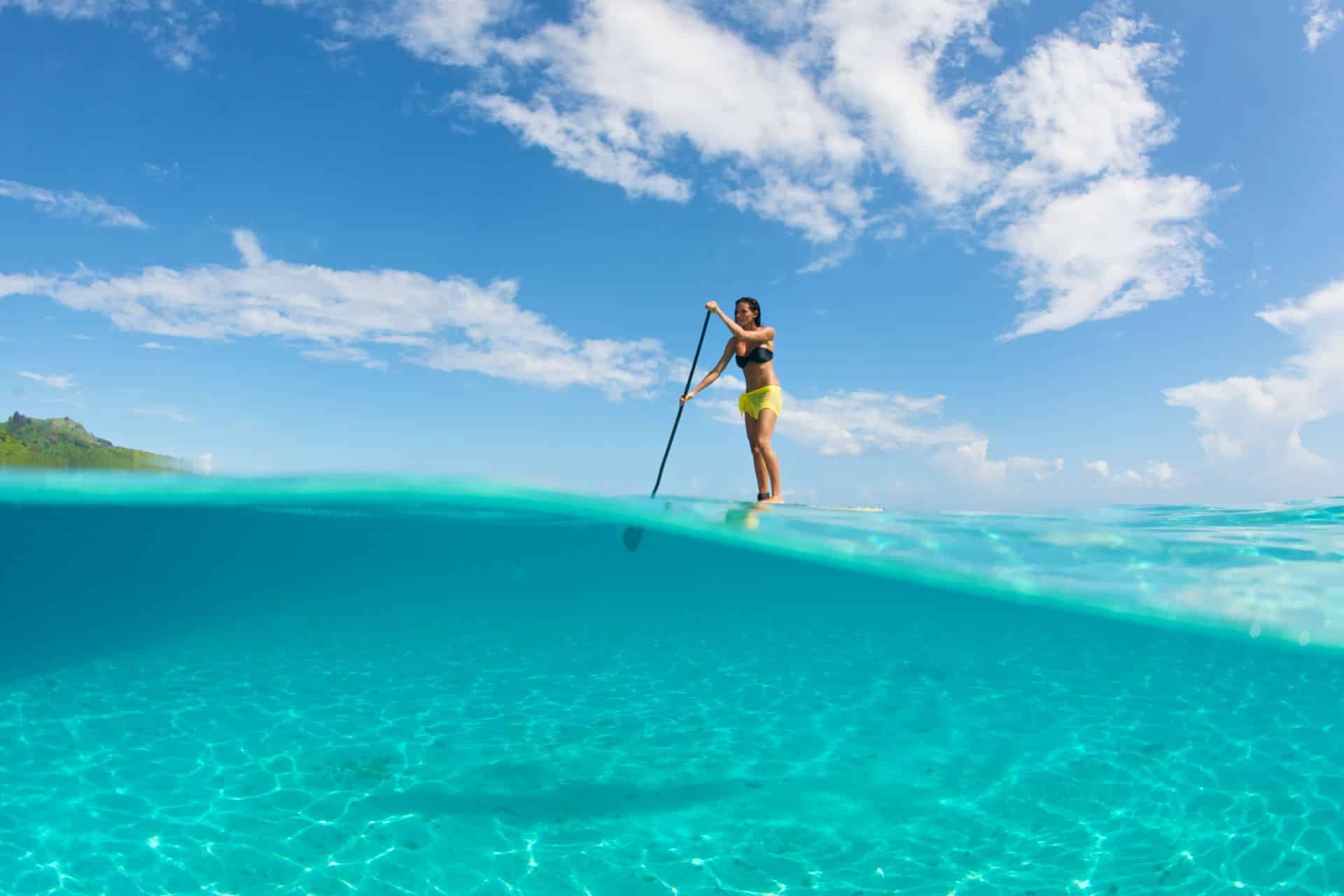
Some keys before starting Stand Up Paddle
Stand Up Paddle (also known as SUP or paddle) is a very popular discipline and was (re)invented by the legend Laird Hamilton. It continues to attract an ever-increasing number of people, whether they are riders, water sports fans or even complete novices. The reason: SUP is probably one of the most accessible water sports, practicable in oceans, ponds, rivers, lakes or bays... or even along the Seine! Summer is approaching and you dream of achieving the same feats as Sébastien Le Meaux, whom the Manawa Blog interviewed in April 2018? Or taking your sweetheart on a romantic stroll? So follow the guide, here are 10 tips to start Stand Up Paddling... and get the most out of it! Let's go...
Choosing the right board
Before you get on the water, a crucial step is to choose the type of board you will use to navigate on the water! Inflatable board, rigid board? The choice is yours, we advise you to be guided by a professional before finding the SUP best suited to your needs. The board of your dreams should be chosen according to your weight.
Here is what the website of the boss Laird Hamilton says, www.lairdstandup.fr: " If you are a beginner in paddleboarding, especially a novice in waves, here is a piece of advice: With a board that is a little too big, you always have fun and you progress. You get on the wave faster, you ride longer, you don't get tired of balancing, in short you have more fun! With a board that is too small for your size and level, you will be unstable, get tired more and catch fewer waves! It' s the same for a ride, a longer board will have a better glide and will be more enjoyable.
So don't be in a hurry, get good advice when choosing your SUP, otherwise you'll have a hard time in your sessions!
Go for it... on the right spot
To be sure to have a lot of fun on your first paddle, choose flat and calm water. Giving your first paddle strokes on an ultra-moving spot is clearly not the best way to learn, wait until you have perfected your skills before taking on the role of Laird Hamilton, Kai Lenny, Justine Dupont or Olivia Piana!
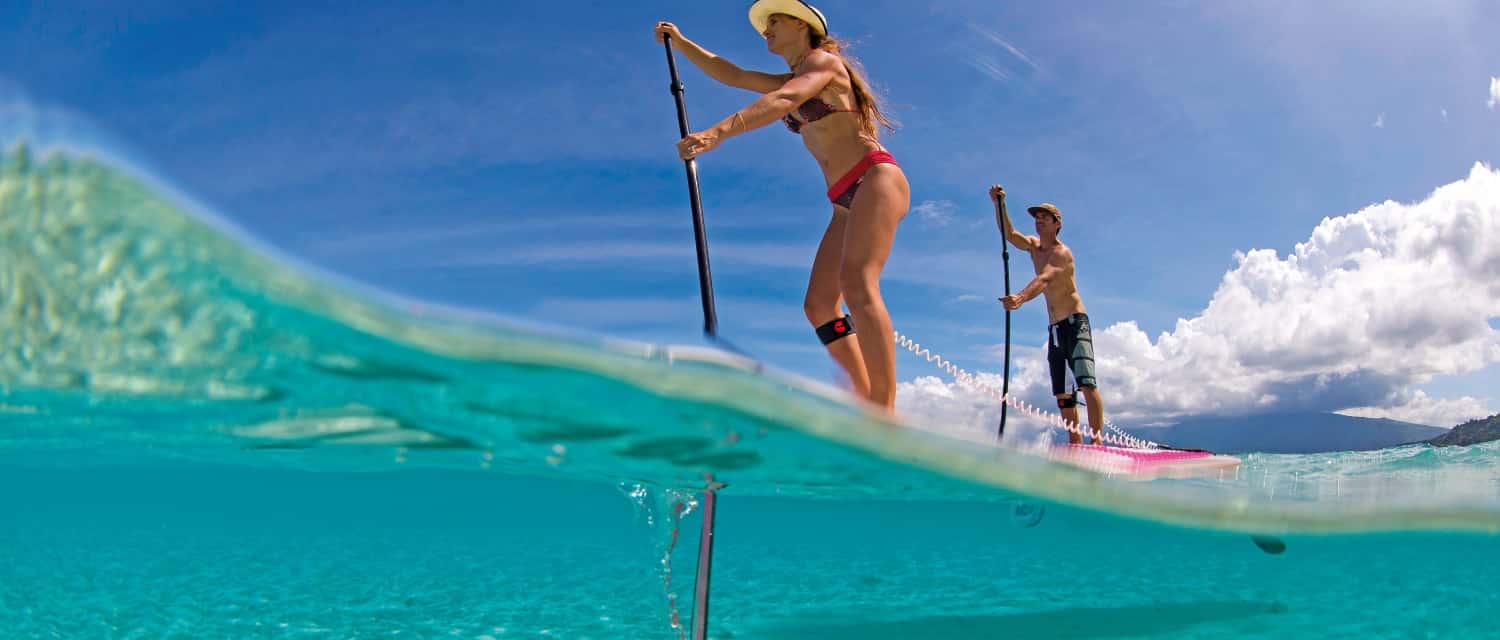
Use a leash
A well-known accessory for surfers, the leash is usually attached to your ankle (or under your knee, for example, depending on the model) to connect you to the board. This is a must, as this "leg strap" will allow the board to stay close to you if you fall, ensuring your safety and that of others. So ladies and gentlemen, don't joke about it and buy a nice leash, it might save your life... Do NOT practice without a leash, and remember to attach it to your board! Rinse your leash after each session, without letting it dry in the sun, and remember to untie any knots.
Carrying your SUP board properly
If you don't want to ruin your session before you start, it is imperative to know how to carry your board! No question of scraping it on the ground, of suddenly dropping it on the ground, at the risk of embarrassing yourself... If it seems complex at first sight, in fact there is nothing simpler than carrying your SUP! Take hold of the handle in the middle of your board, put your paddle under your arm and carry it like a surfboard. Some people even carry their SUP on their head, but for your first session stick to the basics! Once you're close to the water, gently place your board on the sand (or pebbles, you get the idea), nose to the sea and fin to the land. Hang up your leash, lift the tail and push your board into the water... The big moment is coming!
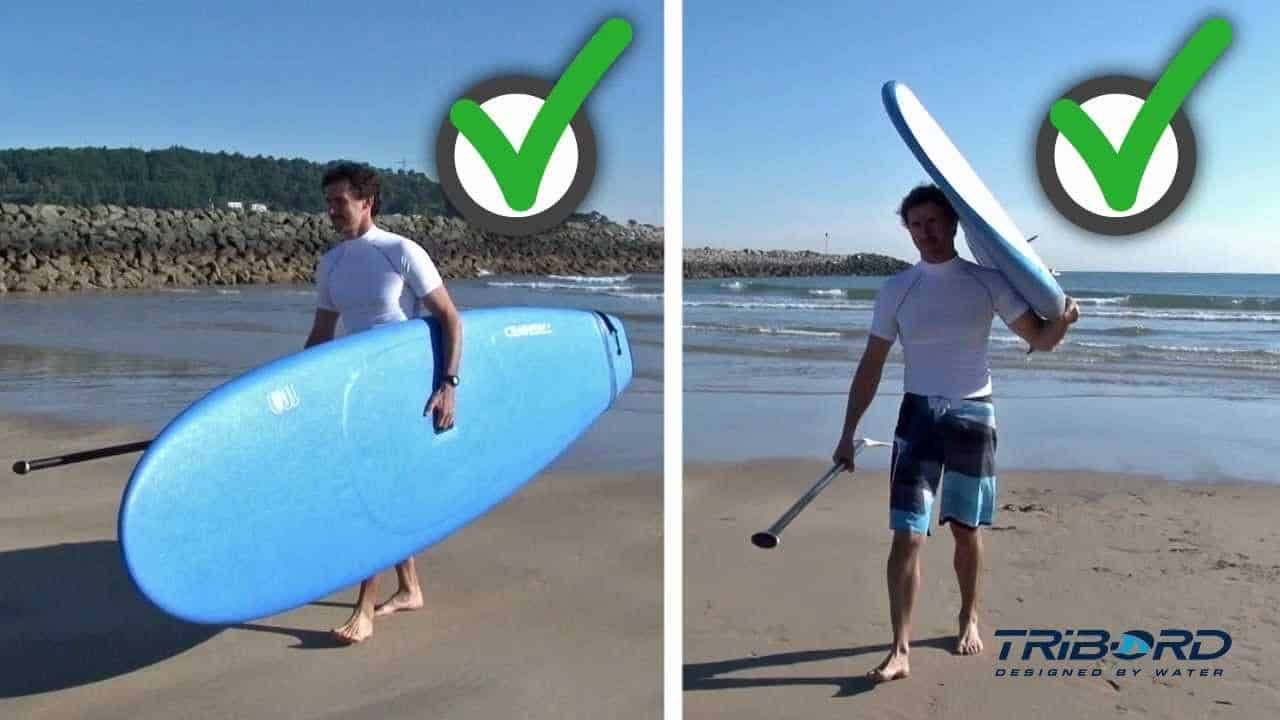
Positioning the board correctly
Getting on your board upside down, that would be the last straw, wouldn't it? So remember to check that the fins are at the back, the nose (the sharpest part) of the board in front of you. Now all you have to do is paddle!
Take care of your gestures
"Without control, power is nothing", said an advertising slogan. When it comes to Stand Up Paddle, it's a bit the same thing: the correct handling of the paddle is essential, otherwise you'll soon find yourself going round in circles... So remember to hold the paddle the right way round (see diagram below, thanks ohmyboard.fr!), with your elbows bent at 90°.
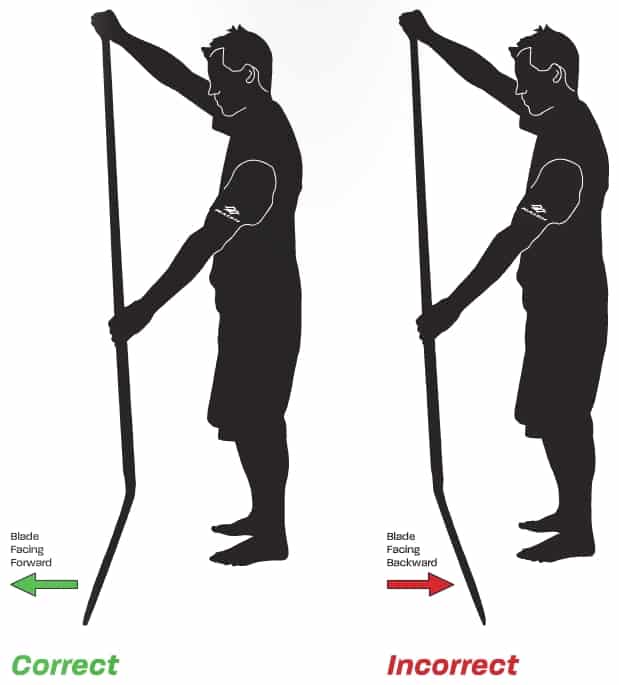
Start your session on your knees, and give a few strokes on each side of the board. Stand up slowly, one foot at a time, and position yourself in the middle of the board with your feet parallel to the handle (shoulder width apart), knees slightly bent. We advise you to plunge the paddle into the water as far forward as possible, while remembering to give a few strokes to the left and then to the right if you want to stay in a straight line... and keeping your back straight! Be careful, don't hold the paddle like a broom, with both hands on the handle! One of your hands should be on the handle, the other in the middle of the shaft. To turn, simply paddle on the opposite side of the turn, which will naturally rotate the front of the board.
Look far ahead
To find your balance on the board most easily, don't look at your feet or the board. Instead, look at the horizon, far ahead... and you will quickly become a champion!

The wind, the SUP rider's enemy
If the wind is the great friend of windsurfers, who bless its appearance, in Stand Up Paddle the wind will not be your friend! Paddling into the wind is indeed very difficult, even for experienced paddlers, so don't make the mistake of eating up this type of conditions for your first SUP session... at the risk of disgusting yourself with this discipline! To avoid too much, remember to check the weather forecast before you go to the spot. If you find yourself fighting the wind, getting down on your knees to paddle is a good solution. This will also give you a mental workout, but we hope you don't have to face the wind on your first session!
Have a good fall!
It's true, taking a spill happens to everyone in SUP, even the best! It is therefore important to know how to fall, so as not to risk hurting yourself by hitting the board (unless it is inflatable). If possible, don't dive forward or backward when falling, so as not to fall on the SUP. To get back on the board, with fresh ideas, simply stand in the middle of the side of the board, put your paddle on it, and pull yourself up onto the stand-up paddle.
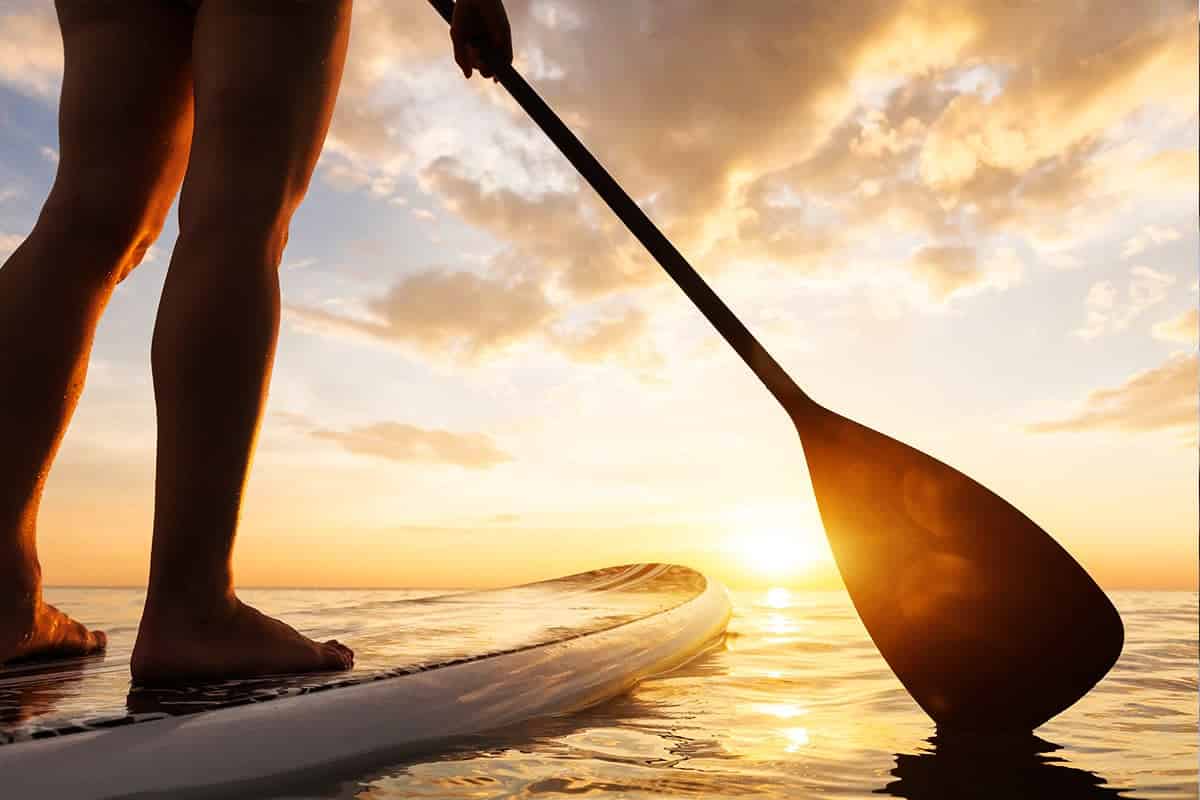
Be zen!
If there is one sport that allows you to relax completely, it is stand up paddling! Once you have acquired the basic technique and found your balance on the board, all you have to do is paddle quietly and enjoy your session. Zen, let's face it... SUP is the ideal activity for clearing your head, discovering new spaces, in short enjoying life! If you are well relaxed, you can also try a SUP Yoga session to regenerate your chakras... Or do a handstand, or even a cartwheel on your paddle, who knows? The important thing is to have FUN, so fill up on good vibes and have a blast!
Front page photo: Tim McKenna